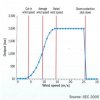GoGreenElectricsLTD
Member
Looks like it shouldn't be too difficult to uprate that controller if we can find out a bit more about it. The FET is only rated at 100V so could be swapped out. Can't read the numbers on IC1 ?
Don't suppose you have a schematic for the controller?
I wish I did !!... Whilst the engineer at SWEA, a guy named Mari has been very co-operative on most things. His solution to the problem is that I buy a seccond contoller and run them in serries. In theory this will work, but I am not convinced as I think there would be some hysteresis problems between the two controllers. The 100v rating for the FET is actualy OK on this device, because its ability to limit voltage is so good it compleately stops any rise dead 2v above its set point
He says he will look into my request for uprating the voltage, but he's always too busy to actualy do it !.
Here is a link to the data sheet for the 10F204 IC
https://ww1.microchip.com/downloads/en/DeviceDoc/41239D.pdf
Last edited:





